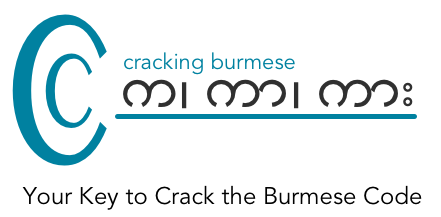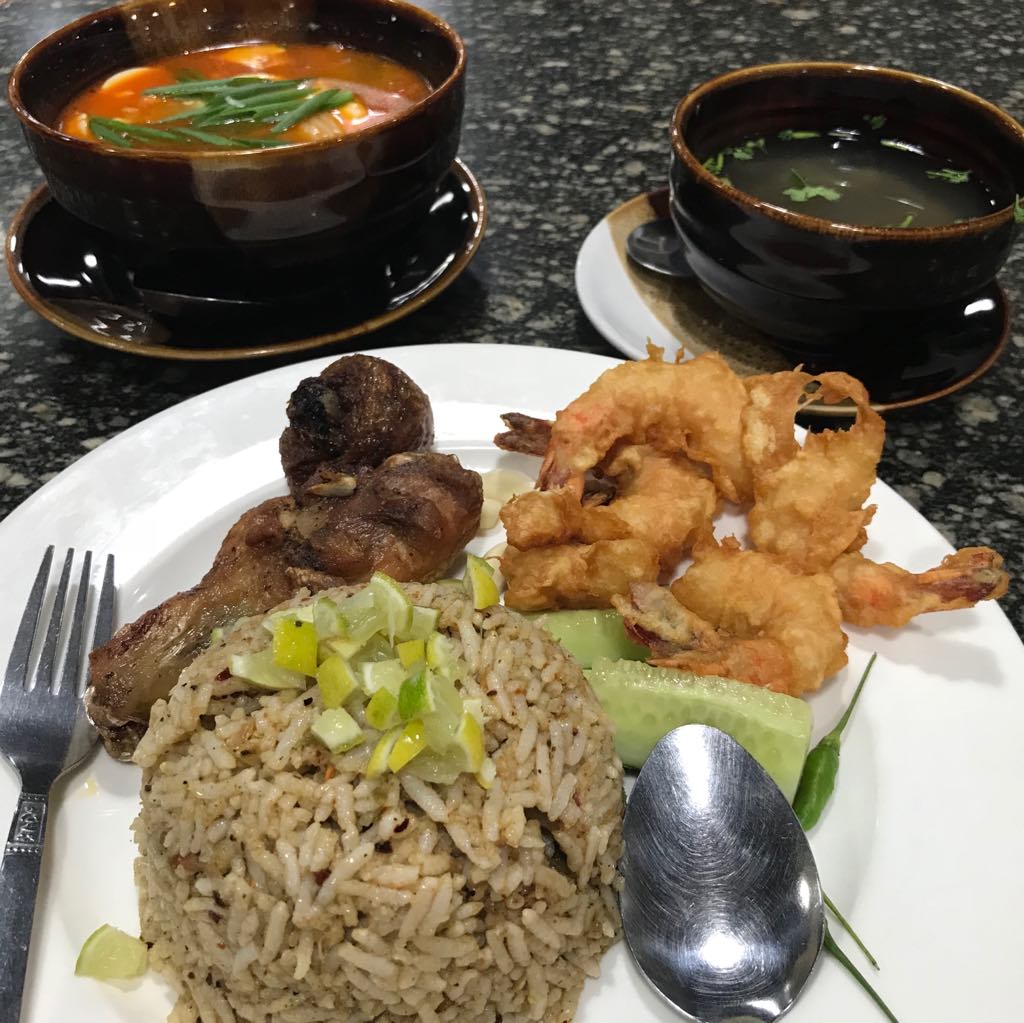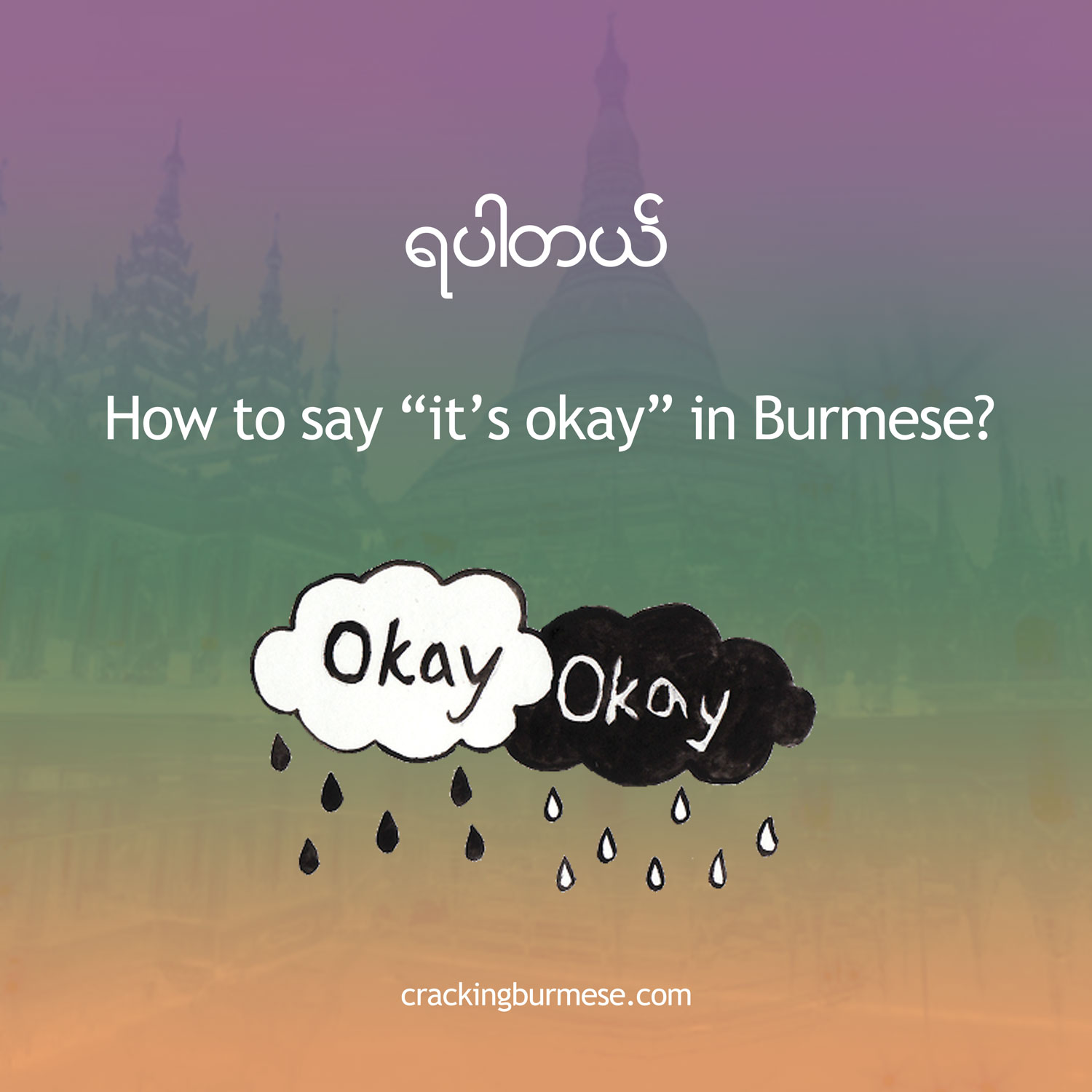A Simple Cracking-Burmese Magic Code: Ya Par Tel (It’s okay/I’m okay)uniburma ရပၝတယ္ myanmar3 ရပါတယ် zawgyi-one ရပါတယ္
There are many times that you will hear the word “Ya Par Tel” in Myanmar. Well, what does this mean?
Ya Par Tel or Ya Tel. ရပါတယ္ / ရတယ္ (I am okay.) (Yes, I can.) (I get it.)
Ya Lar? ရလား (Are You okay?) (Is it okay?) (Can you?) (Get it?)
You turn it into question by taking “Per Tel” out and adding “Lar” at the end.
Ya Per Tel + Lar = Ya Lar?
Let’s go to see some example phrases:
Example 1: a teacher to her student
I will teach a bit faster. Ya Lar? (Are you okay?)
Ya Tel. Ya Tel. ( I am okay.)
(Here, we doubled “Ya Tel” to make it stronger and friendly, and you don’t need to add “I”. )
Example 2: a passenger to the taxi driver
Please drive from this way. Ya Lar, Ako? (Can you, bro?) (Ako = bro)
Ya Par Tel. Ya Tel. (Yes, I can)
Example 3: a guy to the receptionist in a cinema
Latmhat/Ticket Ya Lar? (I get a ticket?)
Ya Tel / Ya Par Tel, Ama. (Yes, you get, sis) (Ama =sis)
Example 4: a guest to the host
Oh, I have made this place messy. (Statement only)
Ya Par Tel, Ya Par Tel. (It’s Okay, it’s okay)
Bonus:
Ya Tel Hote? ရတယ္ဟုုတ္
What does “Ya Tal Hote?” means. Hote = right
So (Ya Tel + Hote? )= You get it, right?
You can use “Ya Par Tel” in many phrases. Please let me know if you have more thoughts on it!
Pronunciation Aid if you need this!
Question: Are you okay? (Ya Lar?)
Answer: I am okay. (Ya Par Tel/ Ya Tel)














